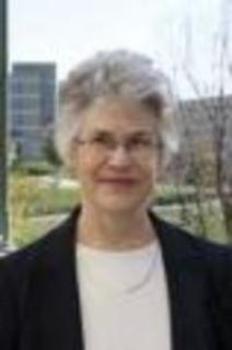Communication access realtime translation (cart) is provided in order to facilitate communication accessibility and may not be totally verbatim. The consumer should check with the moderator for any clarifications of the material.
>> Amy Natho: I would like to welcome you to this week's SpeechPathology.com Virtual Conference on Dysphagia Management. We're very pleased that all of you would join us today and hopefully you'll be joining us throughout the week to hear the latest on dysphagia management from a really fantastic group of presenters. Today's seminar is entitled, “Effects of Transcutaneous Electrical Stimulation during Dysphagia Management: What it does and whether it alters recovery.” It is presented by the very talented Dr. Christy Ludlow. My name is Amy Natho and I'll be your moderator today for this online course. At this time it is a very great honor to introduce Dr. Christy Ludlow. Dr. Ludlow is Professor of Communication Sciences and Disorders at James Madison University and Director of the Laboratory of the Neural Bases of Communication and Swallowing. Dr. Ludlow has conducted research on the neurophysiology of voice, speech and swallowing and disorders for over 35 years. She has received the honors of the American Speech-Language Hearing Association and the American Laryngological Association. Recently Dr. Ludlow has been investigating the use of motor and sensory stimulation in the rehabilitation of dysphagia and has developed new treatment regimens for the intensive retraining of swallowing. So welcome, Christy. Thank you so much for being here today.
>> Christy Ludlow: Thank you very much. I'm delighted that some of you are spending your lunch hour with me. We have got a fair amount to get through so in order to spend time on your questions I'm going to go ahead. Hello from the Shenandoah Valley. I have some pictures of our locale and hope you're enjoying your day.
Background
I'm going to start with the background on transcutaneous surface stimulation. It is currently being used by many as a tool to augment dysphagia therapy. Electrical stimulation as it is used as part of the commercial system VitalStim® is placed on the patient and the level is turned up on the current that is being applied to the neck until the patient feels a tug. Then the stimulation is left on throughout an hour of dysphagia therapy.
I want to emphasize that one of the things you are told when you take the course and do certification, as I did in order to do some research on this, is to have the patient do effortful swallows throughout the hour. So a lot of what is going on, besides the electrical stimulation, is the patient doing a great deal of effortful swallowing. To determine the effectiveness of this treatment, then, we need to compare the dysphagia therapy with and without the use of electrical stimulation. Ideally, it would be when the patient is also doing effortful swallowing for a full hour but without electrical stimulation. Unfortunately, to date we don't have published studies doing just that, so we have to keep that in mind when we look at the literature, which we'll do a little later.

